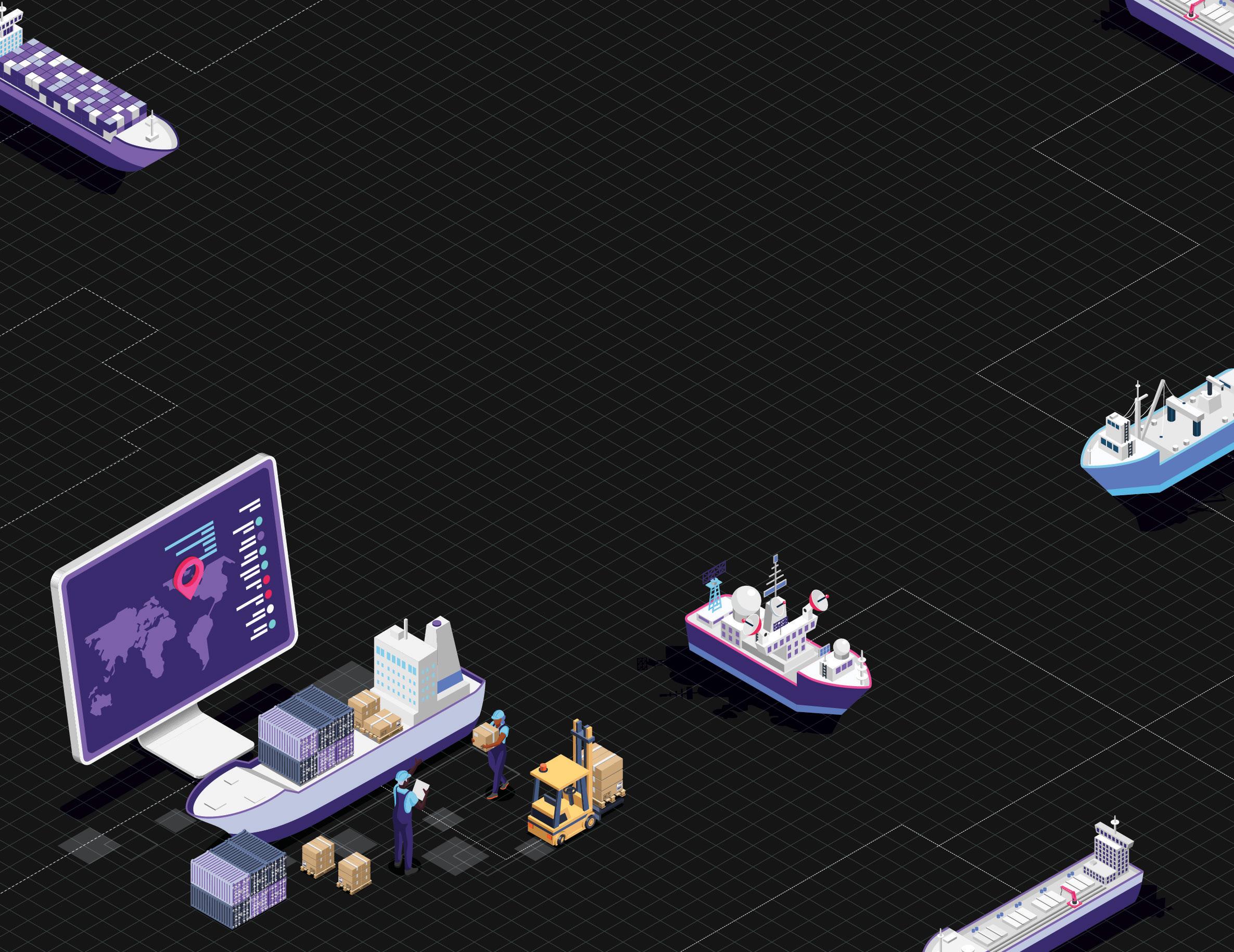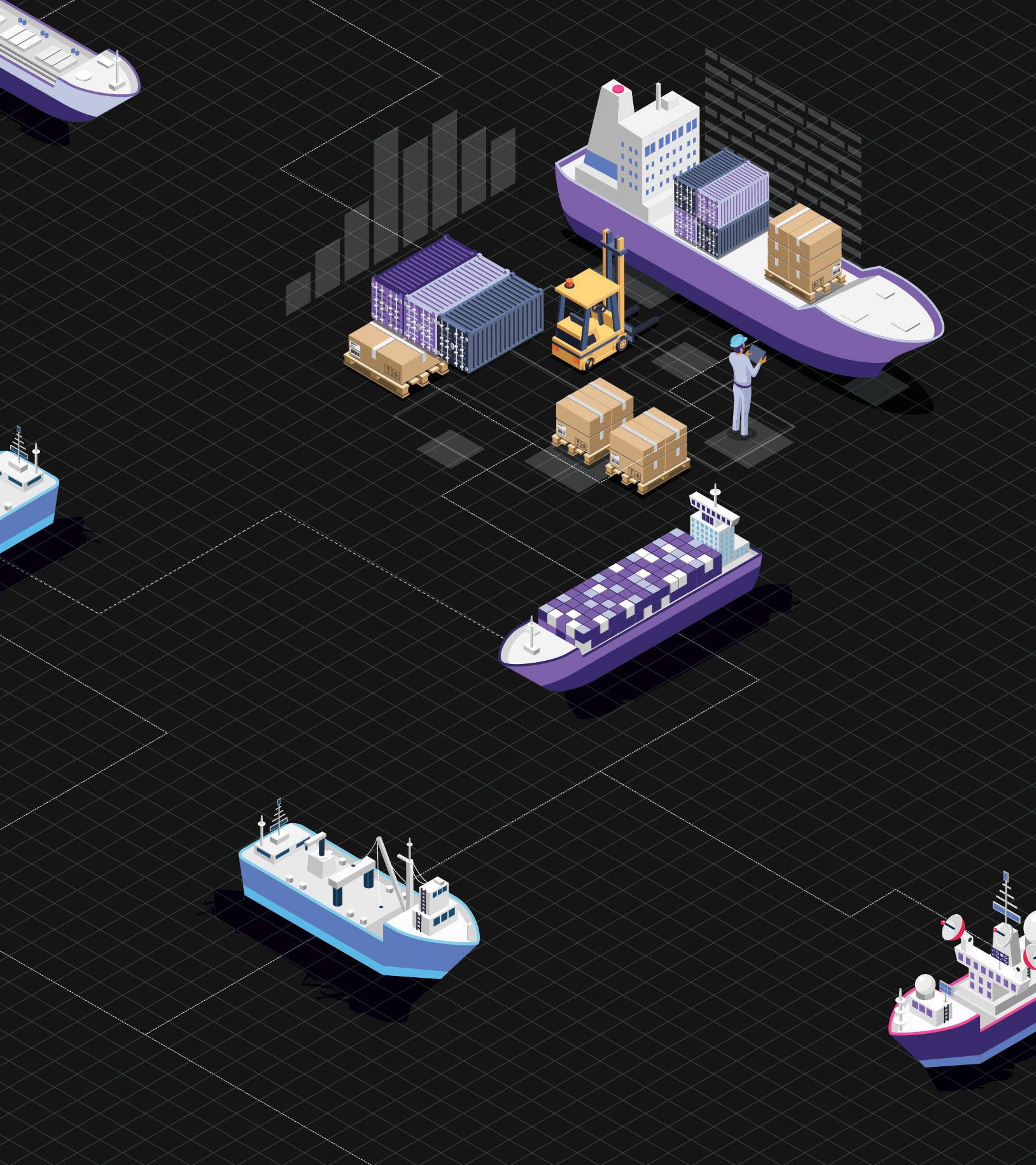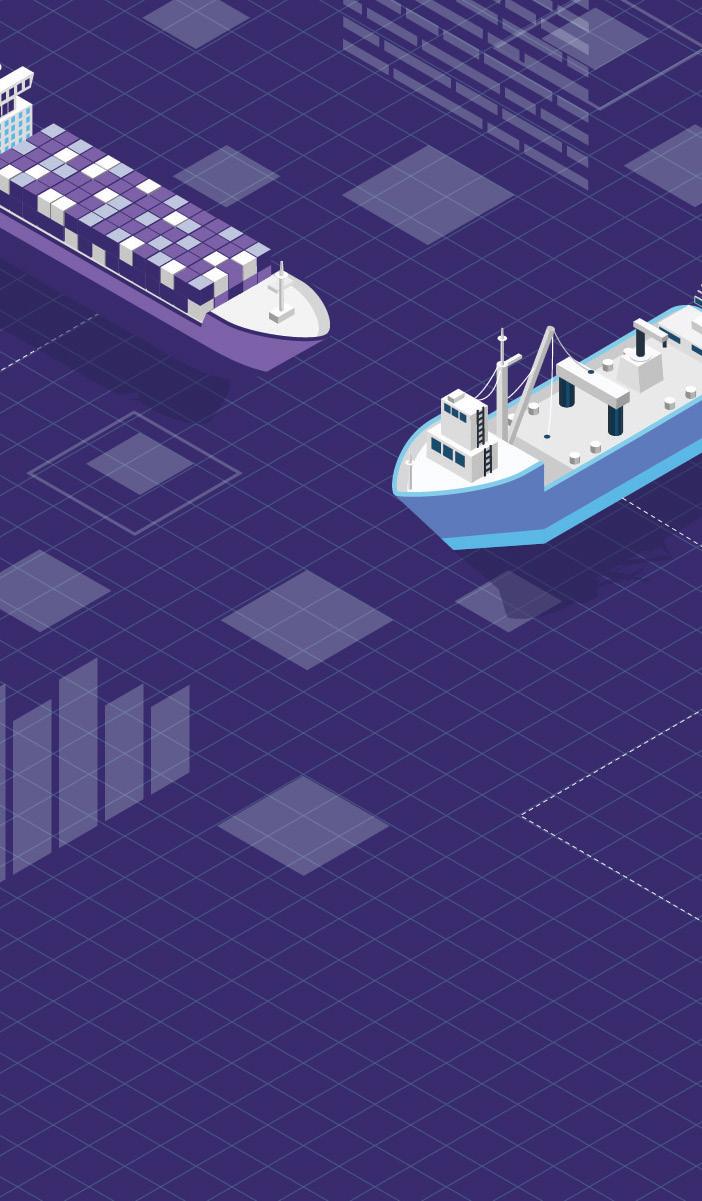
31 minute read
LEADERSHIP FLUENCY

How do we help learning concepts flow through our organizations to ensure that its leaders are speaking and practicing a “leadership language”? Leadership language and practices should reinforce the organization’s guiding principles, such as values, mission, vision and competencies. It takes more than a one-and-done training class approach to create sustainable, effective leadership development. Instead, it takes a learning and development (L&D) strategy of providing multi-touchpoint learning experiences to develop current leaders while simultaneously creating a leadership pipeline of emerging and aspiring leaders.
Advertisement
This article highlights practices for connecting current leadership development programs with other learning offerings, such as regularly scheduled training sessions, microlearning and selfdirected learning. Another key component is creating learning communities of practice within the organization to allow leaders to share and explore latest ideas and skills, as well as to become fluent in the leadership language and practices that express the organization’s guiding principles.
Fluency is the state of being fluent, or rather the ability to express oneself smoothly, easily or readily. Being fluent is usually associated with the ability to speak, write or read a language “accurately and with facility.” It is also being able to comprehend and apply ideas appropriately. Looking deeper into the definition, however, being fluent also applies to movement, style or practice that is smooth and graceful, and the ability to “flow freely” or be “fluid.”
Applying all aspects of fluency to leadership development comes in handy for L&D professionals. As pointed out in “Why Leadership Development Isn’t Developing Leaders,” an HBR article, leaders in today’s volatile, uncertain, complex and ambiguous (VUCA) environment need to be intuitive, fluid and more collaborative. Developing leaders who are fluent not only helps ensure that all levels and areas of leadership are congruent with each other but also with the changing needs of others and the organization. Leaders who are fluent possess an awareness – of self and others – enabling them to comprehend different and sometimes ambiguous situations, and they are able to adapt their style to meet those needs while still maintaining the organization’s guiding principles.
So how do we as L&D professionals and designers create the conditions for this to happen and open up opportunities for all leaders? Looking at some tips of how people become fluent is helpful.
How to Become Fluent
Numerous studies from language experts have shown that to become fluent in a language, the learner should:
• Immerse themselves • Stay committed daily
• Engage with local literature, films, music, etc.
• Push themselves out of their comfort zone
• Find a language learning partner or group
As L&D professionals, we know that mastering any type of skill involves a process. It also involves intentional practice and exposure to the new learning through different touchpoints and interacting with people of various skill levels.
6-point Learning Approach to Creating Leadership Fluency
L&D professionals can apply similar concepts from the language experts to leadership development. For example, focusing on design to allow for both formal and informal learning touchpoints generates opportunities for immersion and can encourage learners to stay committed to practicing skills.
Taking a more comprehensive approach to the learning design of leadership development also makes certain that leadership language aligns in the various offerings. There are many benefits to this approach, such as addressing learning retention, or the forgetting curve, one of the biggest challenges for L&D professionals. L&D
professionals can reinforce learning in myriad forms and have participants build on learning concepts gained from previous sessions. This approach also leverages the model of spaced learning delivery, where content is reintroduced over specified intervals.
Here are approaches we have found successful in our leadership development design that draw from the method language experts use to help learners gain fluency. Leaders can learn:
From Those Already Performing the Skill.
Both seasoned and emerging leaders can benefit from this learning touchpoint. It gives emerging leaders an occasion to learn directly from seasoned leaders. Additionally, when leaders are the recipient of cross-training, working in a different area of the organization can help break down silos and promote better awareness of others. Some best practices include job shadowing, crosstraining, and job sharing or rotation.
Incorporating job shadowing, for example, into a leadership development program creates experiential learning for the participants. Learners can encounter in-real-time problems or situations and take part in real-life, in-action solutions.
By Taking on Additional Responsibilities.
This approach can push participants outside of their comfort zones by placing them into unfamiliar situations where they can learn and grow. It gives them a chance to stretch their talents beyond their current expertise and to perform at higher levels. Some examples include stretch assignments, special projects and committee work.
Adding stretch assignments or special projects into your leadership development program provides an opportunity for practicing new skills. It also allows participants to prove their capabilities.
Through Formal and Informal Training.
Formal learning tends to be the bread-and-butter of most L&D training programs; however, it’s often not enough or even the right fit for some learners. Incorporating resources that point current and potential participants to other learning opportunities that align with your offerings can ensure leadership fluency continues. Some examples include external training and professional development courses, certifications or badges, and degreeseeking programs.
Most external training and professional development from vendors such as LinkedIn Learning and Coursera allow L&D practitioners to create custom learning paths. Integrating learning paths through these external vendors with existing internal programs is a great way to have participants engage with leading experts in other organizations while discussing and analyzing learned concepts with others.
6-point Checklist
Use these approaches as a checklist when designing your leadership development experiences to ensure leadership fluency. Make sure participants learn:
From those already performing the skill.
By taking on additional responsibilities.
Through formal and informal training.
By group participation.
With guidance from others.
From self-study.
By Group Participation.
Group participation is almost a given in most training sessions. However, forming semi-structured groups outside of formal offerings, or in addition to programs can provide more support and space to help participants gain leadership fluency. Some examples include communities of practice, service or volunteering, and online forums and social learning.
Leveraging Microsoft Teams or Slack is a great way to build social learning and communities of practice. For instance, you can create a channel specifically for a leadership development course where participants can reach out to others with questions or to share resources.
With Guidance from Others.
There are many proven benefits of learners seeking guidance from others as a component of their professional development. For instance, when added to a formal learning experience, it can promote a learning culture and help build connections between participants, as well as growth. Some examples of these types of learning experiences include coaching, mentoring and mastermind groups.
Adding coaching and/or mentoring programs into your leadership development design produces one of the biggest opportunities for integrating different leadership development programs and cultivating leadership fluency. You can add a component to your executive leadership program where leaders must coach participants
for an aspiring leaders’ program, for example. This design simultaneously teaches executive leaders some needed coaching skills while allowing aspiring leaders to receive the benefit of their coach’s experience.

From Self-study.
One main benefit of including self-study opportunities in leadership development design is that it encourages learners to develop self-directed learning skills. This approach can also help to promote a learning culture within the organization. Some examples include books, articles and blogs, videos, and podcasts and interviews.
Including a list of other learning resources as a “next steps in your learning” can enhance the learning experience. For example, you can develop a “Read, Watch, Listen” series as a way to interconnect and reinforce learning offerings. This approach also reinforces and expands learning concepts for past participants.
Your Call to Action
Now it is time to assess your leadership development design and approach. To help you promote leadership fluency in your programs, we suggest these steps:
1 | Assess Your Approach:
• What are your organization’s guiding principles?
• What are your current leadership development offerings?
• How do your current leadership development offerings reinforce the language and practice of your guiding principles?
2 | Apply New Strategies:
• How will you adapt your current learning offerings and programs based on the six-point learning approach? will you put in place to continue the learning conversation?
• What new ideas will you take away and continue to explore within your organization?
3 | Build Your Own Community of Practice:
• Who can you connect with to share learning resources, best practices and ideas to try?
• Who else within your organization or network is performing similar work you can partner with?
• How can you ensure sustainability for your group?
Rachel Watts and Bryan Harber are training generalists at Georgia Institute of Technology who focus on leadership development, onboarding and communication skills. Together, they bring over 20 years of L&D experience to their roles. Email the authors.
Leveraging Data
TO INCREASE Leadership & Team Effectiveness
IN THE FLOW OF WORK By Andy Stankiewicz
Major business, societal and technological disruptions – punctuated by the global pandemic – have been characterized as a “time machine to the future.” By April 2020, global companies, such as IBM, were reporting that nearly 100 percent of their severalhundred-thousand-strong workforces were remote. Across numerous industries, companies accelerated multiyear digital transformation initiatives within the span of a few weeks. And hierarchal management models increasingly shifted to more agile teambased structures to sufficiently respond to events on the ground, thereby increasing the demand for leaders.
Organizations have always needed effective leaders to inspire action and manage change. To thrive in this new world of work, however, we’re challenged to develop higher-quality, more agile and more diverse leadership – at all organizational levels.

Likewise, high-performing teams have always mattered. Today, however, our teams are the epicenter of innovation, engagement and inclusivity (or the reverse) – requiring new capabilities, data and tools to support decisionmaking and collaboration.
Finally, human-centered leadership has always been valued. Developing empathetic leaders with high emotional, relational and team intelligence is a strategic imperative, particularly as issues such as employee well-being, resilience, psychological safety and belonging take center stage.
Data-driven Approaches in Leadership Development
Modern leadership requires new approaches to the way leaders and their teams navigate this rapidly evolving, often ambiguous landscape. This includes new data-driven approaches to leadership development and elevating the role leaders play in shaping culture by leveraging technology, data and tools in the flow of work.
Not surprisingly, traditional approaches to leadership development – i.e., disproportionately focused on executive leaders, high-touch, instructor-led, offsite, content-driven programs – are increasingly less effective or simply not scalable in the current environment. Participants often struggle to transfer

these experiences into more effective leadership behaviors on the front lines. Research also continues to show that behaviors acquired in off-site settings are easily forgotten once leaders return to their natural work environments.
Deloitte Consulting correctly suggests that the predominant shift in leadership development programs today will be moving from a traditional content-driven approach to a more dynamic contextdriven approach:
“Context-based approaches use the real-life problems of the organization as the ‘living case study.’ They operate in the real and relevant context of the business, erasing the claim that learning and ‘work’ are separate. Therefore, as the business changes, so do the leadership experiences. Context-based development prioritizes the ‘learn as you work, work as you learn’ philosophy, always striving to solve actual problems as leaders simultaneously grow their capabilities. The potential benefit of this type of methodology is that you can create a simultaneous and effective impact—solving the challenges of the business while learning at the same time.”
A recent example from health care supports this shift of delivering development opportunities in the flow of work. A physician leader at a large hospital was struggling with a noncompliant direct report. Communication was breaking down around an important project. The leader compared his psychometric “portrait” with that of his colleague and discovered that both their conflict management styles were characterized as strongly “competing,” rather than collaborating. Naturally, this contributed to their vigorous debates and disagreements on a wide-range of initiatives.
The physician leader shared his diagnosis and insights with his executive coach. Together, they identified ways to enhance communication with the direct report. According to the coach, “The leader used psychometric data to better understand the underlying dynamics of the relationship with his direct report. As a result, we could focus our time together on prescriptive solutions around communication, feedback and collaboration rather than diagnosis. Ultimately, we accelerated a breakthrough, and the leader greatly improved his relationship with the direct report.”
A senior human resources (HR) professional adds: “Psychometric data is powerful because it is multifaceted. We’re not just looking at one dimension of a human being; we’re looking at the whole person – everything from how you show up, to what motivates you, to how you react under pressure. These are important dimensions for leaders to understand not only about themselves but about the impact that has on others.”
What the Right Data Set Can Do for Your Team
Psychometric data is equally applicable to teams. For example, a 30-year industry veteran observes: “If I have psychometric data, I can go to a team and immediately have conversations about
the makeup of that team, including the team’s strengths and blind spots, how balanced or unbalanced that team is and how to optimize that team’s composition for performance.” He adds, “When I was a practicing clinical psychologist, I would do the inkblot test and that would accelerate my understanding of somebody by about six months. Similarly, by examining psychometric data, I accelerate my understanding of that team – and the root causes of certain dynamics – significantly.”
Furthermore, a medical research company used aggregate psychometric data to design a more effective curriculum for scientists who likely would assume positional leadership roles as future heads of its research labs. The organization identified the cohort’s top attributes, blind spots and development needs and created a year-long program comprised of curated microlearning and macrolearning content. This data-driven approach to developing leaders at scale – with the ability to access just-in-time, just-in-need micro content and tools in the flow of work through a platform – supports a continuous learning culture.
In addition to psychometrics, a comprehensive understanding of workforce experience is another critical data set for leaders. Recent disruptions demonstrate how quickly the experience of employees can shift, yet a relatively low percentage of organizations measure workforce experience more than once a year. Deloitte Consulting observes, “Whatever workforce measures might have indicated prior to these [2020] disruptions, they have most likely changed. As a result, we recommend increased frequency of workforce experience measurement…to maintain an accurate, up-to-date picture of your workforce experience.”

A manufacturing company recently surveyed its entire global workforce across multiple indices. The organization scored high around the quality of its leadership but low around coaching and managerial skills. Leaders were great at communicating vision, but employees sought a greater one-on-one connection with their immediate managers. Survey results were further correlated with leaders’ psychometric assessments to generate prescriptive recommendations for each manager around enhancing relational skills, strengthening one-onone relationships with team members and developing desired behaviors.
In an environment where leaders and managers have a responsibility to support employee well-being, psychological safety and belonging, developing these essential capabilities around emotional, relational and team intelligence is more important than ever. And focusing on a small number of leadership behaviors necessary for success results in better outcomes, research shows.
Emotional, Relational and Team Intelligence
Most of us are familiar with the concept of emotional intelligence (EI). One of the foundational aspects of emotional intelligence is self-awareness. This includes an awareness of our own emotional states, an understanding of how those emotional states impact others and the ability to manage our emotions. With this self-knowledge, we can connect more meaningfully and deeply in relationships. Relational intelligence is emotional intelligence turned outward. Relational intelligence speaks to our ability to be aware about how we affect others and how their emotional states might be affecting us. This enables us to act with empathy, to interact with and resolve conflict, and motivate and persuade others in ways that have impact.
Team intelligence is emotional intelligence applied in a team setting. Having good team intelligence includes the ability to assess and manage the emotional states of the team. This allows a leader to anticipate roadblocks to communication, resolve conflict and recognize and honor team members’ unique contributions. Team intelligence also helps colleagues nurture and support one another so they can reach their full potential. Having team intelligence enables leaders to facilitate psychological safety, the hallmark of high-performing teams.
Empower Leaders with Data
When McKinsey & Company amassed systematic data on the interventions that drove effective leadership development programs, two sets of interventions were most impactful, statistically speaking, namely (1) focusing on the leadership behaviors most critical to performance, based on context and (2) ensuring leadership development interventions reached all organizational levels.
If our current and future leaders are to succeed as stewards of culture, engagement, innovation and inclusion, we need to provide highly personalized development opportunities in the flow of work that simultaneously address real problems and high-priority organizational needs. Increasingly, this requires that we empower leaders at all organizational levels with access to data, resources and tools and help them develop those essential capabilities that drive sustained impact in our new world of work.
Andy Stankiewicz is an EVP at SurePeople, a next-gen platform that optimizes leadership development, team performance and talent strategies for the new world of work. Email Andy.
Enhanced learning. Engaged working.

THE POWER OF PRACTICE

How many times when you were growing up did you hear, “Practice makes perfect”? For me, it was a lot. When I entered the training industry, I was introduced to an updated perspective on this sentiment with Vince Lombardi’s quote, “Practice does not make perfect. Only perfect practice makes perfect.”
But today, it’s Les Brown’s take on the topic that resonates: “Everything we do is practice for something greater than where we currently are. Practice only makes for improvement.”
Much of my learning and development (L&D) career has focused on the “intake” dimension of learning – the workshops, eLearning modules, videos and other vehicles that dispensed the how-tos associated with a given skill. Yet, even in the days when instructor-led options were the default, no course was complete without a trio skills practice (i.e., role-play).
While practice has reached new heights with sophisticated systems, simulations and virtual or augmented reality in some environments, many training professionals struggle to find ways to create meaningful rehearsal when learning occurs virtually or via on-demand platforms.
But Les Brown’s outlook extends far beyond formal learning initiatives. Every moment presents an opportunity to practice for “something greater” and work toward improvement. This perspective offers liberation because everything we do is just practice. It also highlights the importance of being deliberate in that practice.
Imagine what could be possible if we brought conscious attention to ordinary occurrences. If we treated our dayto-day activities as a lab for learning. If we embraced life’s ups and downs as “practice for something greater.” Employees could grow in any role independent of promotions or pathways. Greater mindfulness and skillfulness would permeate organizational cultures. People – and businesses – would thrive.
Learning professionals and functional leaders can help others leverage the power of practice into their professional development. Consider these simple yet powerful strategies.
INTRODUCE INTENTION
Life is constant practice. The question is: Are we practicing what serves us well and will allow us to improve? When the answer is “no,” the reason is generally a lack of awareness. So, draw attention to what and how others are practicing. Help them recognize patterns and habits that are helpful and not. Encourage them to set an intention for what and how they want to practice in their daily activities and how it will lead to improvement.
SPOTLIGHT STRENGTHS
According to research conducted by Jack Zenger and Joe Folkman, it’s easier to take a strength to the next level than it is to improve a weakness. So, help others establish success and momentum by identifying current strengths to amplify through practice. Giving greater attention to what one does well can enhance the skill and find new, different opportunities to use it as well.
EXPLORE EXPERIENCES
Life moves pretty fast for most of us. And if you don’t pay attention, a lot of insights and learning can pass you by. So, facilitate conversations that help others pause and connect the dots between their practice and the outcomes. Debrief experiences in a way that allows people to recognize how their efforts might be moving them in the direction of improvement.
PROMOTE PRACTICE PARTNERS
Sometimes the practice of skills, behaviors and intentions can become more effective when supported by rehearsal. Improvement can be a team sport, so volunteer – or encourage them to find peers – to role-play and offer them meaningful feedback. Let them work through the kinks in a safe environment so that their real-time practice might be even more productive.
Life is constant practice. Recognizing this and taking full advantage of the moment-by-moment opportunities to improve and prepare for “something greater” is a powerful (and costeffective) learning strategy that we all might want to start practicing.
Julie Winkle Giulioni has 25 years of experience working with organizations worldwide to improve performance through learning. Email Julie.
BRAIN-BASED LEADERSHIP DEVELOPMENT:
WHAT EXACTLY ARE YOU SCALING?

Can leaders be developed or is leading a genetic trait? While the tendency to lead does have a heritable component, the capacity to lead can be nurtured. Chief learning officers are recognizing that leadership development strategies need to be comprehensive, and not exclusively for their senior-most leaders, but scalable throughout the organization. Granted, different leadership functions require different forms of support, but there are dimensions of leadership crucial to the function that are frequently ignored.
SCALING SELF-DEVELOPMENT
We frequently hear leaders being encouraged to “bring your whole self to work.” Warren Bennis emphasized this when he said, “Becoming a leader is synonymous with becoming yourself. It is precisely that simple, and it is also that difficult.” You cannot be a leader if you are not deeply self-connected. And as Bennis points out, this is no walk in the park. While finding a sense of purpose is important, you cannot find your “why” if you are not connected to your “I.”
In the brain, the “self” circuit overlaps with a circuit that is turned on when you are not focused. If you spend your day pecking away at your computer, sitting on Zoom calls and staring at your computer, your “self” will be elusive.
Some organizations have constructed a scalable program for building selfawareness that is semi-self-paced and connected to “un-focus” experiences that can be scaled throughout your organization. If you focus on senior leaders only, deeply self-connected leaders will be trying to get work out of people who are barely present.
Performance enhancement requires a similar strategy – a controlled way in which you can shift the entire culture of your organization. In most work environments, to maintain your high performance, you have to intelligently build un-focus into your day to refuel your brain. This needs to be more than instruction. It needs to be embedded in the culture.
Uncontrolled stressors do not generally develop leaders, they actually kill them. Chronic stress accelerates aging, and work-related stress can cause gene changes associated with diseases like cancer, heart disease and Alzheimer’s disease. Flexible working conditions make life better and take less of a toll on your brain. Organizations that ignore this may pay in the costs of turnover. Forty percent of workers are considering quitting their jobs, and hybrid work is on the horizon.
In this context, many organizations are trying to do their best to show that they care. Leadership development needs to help people authentically focus on a promising future, so that the possibility of a better life is something they can commit to. In an uncertain world, having existential confidence is essential, and it is important to scale this capability throughout the organization.
IN CONCLUSION
Develop a program focused on selfconnection in tandem with a program that inspires finding one’s purpose through work. Add in a program on possibility thinking and existential confidence, and use technology so that open enrollment programs exist in addition to focused cohorts. Also, rather than hiring a variety of people, be circumspect and have some consistency and trust in the thought leaders and facilitators you work with (imagine seeing a different therapist every week).
Depth is essential, so avoid platitude talk (e.g., you must sleep, eat and have energy), and instead, provide brainbased tips that can be implemented for one’s self and scaled throughout the organization. When you focus on the seriousness of what leadership development is, that you are actually in charge of helping someone craft a life and purpose, it will take on an entirely different tone and be infinitely more effective.
Dr. Srini Pillay is the CEO of NeuroBusiness Group. He is a Harvard trained psychiatrist and neuroscientist, on the Consortium for Learning Innovation at McKinsey & Company, and author of “Tinker Dabble Doodle Try.” Srini is also cofounder, chief medical officer and chief learning officer of Reulay. Email Srini.
LEADING A HYBRID TEAM

The role of the leader continues to evolve to keep pace with the needs of the business – from perfecting the efficiency of the assembly line during the industrial revolution to ethically leveraging the use of artificial intelligence and machine learning to predict consumer behaviors in the 21st century. As the work environment changes, so must our approach to leadership.
During the COVID-19 pandemic, many organizations shifted to remote workforces. Now, as employees begin to migrate back to the office, companies are adapting to a hybrid workplace. With some employees located in the office and others working remotely, this presents challenges for many leaders. Learning and development (L&D) has an opportunity to guide their organizations’ leaders through these transitions to bring stability to the organization as they find their feet in this uncertain economic climate.
HYBRID LEADERSHIP SKILLS
There has been a multitude of changes and disruptions in business over the last 18 months. As employees were sent home, leaders needed to quickly learn how to manage in a remote environment. Just as leaders gained confidence in their remote leadership skills, however, some employees began returning to the office – requiring hybrid leadership skills.
Leaders are facing new challenges as they enter this new world of work – from sustaining the company culture to maintaining clear communication and expectations regardless of location. Leaders must unify a dispersed workforce and align the team around shared goals and objectives.
To support employees in a hybrid work environment, here are few things for leaders to consider:
SETTING EXPECTATIONS
This new world of work requires new processes and procedures. Teams should discuss how and when they’re going to communicate, who needs to attend meetings, who has access to information and where to turn for guidance. Managers should also discuss with employees how they will structure their day, ensuring both remote and in-office employees have access to the same tools, resources and flexibility to meet goals.
MAINTAINING FLEXIBILITY
The onset of the pandemic may be in the rearview mirror, but employees are still navigating uncertainty. Flexibility has become a critical skill for leaders and employees as they navigate a new world of work. A flexible mindset will enable leaders to adjust goals as needed. Prioritizing tasks and projects can help the team focus on what matters most if plans need to shift.
OPEN COMMUNICATION
Communication has always been a critical leadership skill, but hybrid work requires clear communication for success. Leaders must structure individual and team meetings to ensure participation by all employees, regardless of location. Leaders should ask for feedback from their employees on the format of meetings, challenges of a hybrid team and how the team can improve processes and procedures.
REDEFINING COMPANY CULTURE
The pandemic required many leaders to essentially tear up their plans and start from scratch. Business models shifted in response to the changing market – altering processes and procedures, eliminating outdated products and adding new offerings to the business portfolio. We’re at a turning point in business to redefine our company’s culture. This is an opportunity for leaders to tune in to what employees need and create a culture that nurtures and supports talent so that the company can achieve its short- and long-term goals.
MOVING FORWARD
The world of work is evolving – and so is leadership. As hybrid work environments continue to gain traction, leaders need to be prepared with new skills and a new mindset. Leaders must work to unify their dispersed team and create a shared vision for success.
Michelle Eggleston Schwartz, CPTM, is the editorial director at Training Industry, Inc. Email Michelle.
CLOSING DEALS
RECENT ACQUISITIONS POSITION ELEARNING BROTHERS AS A ONE-STOP-SHOP SOLUTION
BY SARAH GALLO, CPTM
eLearning Brothers has come a long way from its humble beginnings as a learning templates startup that two brothers, co-founders Shawn and Andrew Scivally, were running out of a basement in 2009.
After acquiring eLearning software provider Trivantis and eLearning provider Edulence in April 2020, eLearning Brothers acquired game-based learning provider The Game Agency in March 2021, positioning the company as a front-runner in the learning technologies market, says Steven Baer, chief creative officer at The Game Agency.
EVERYTHING YOU NEED, ALL IN ONE PLACE
From games and arcades to virtual reality (VR) to authoring tools and eLearning Brothers’ learning management offering, The Rockstar Learning Platform, eLearning Brothers isn’t giving its customers any reason to look elsewhere for its digital learning needs.
Acquiring Trivantis, Edulence and The Game Agency was a “full integration” of people, processes and finances that transformed eLearning Brothers into a learning technology product business, says Andrew Scivally. Their goal? To create a business that “can do everything [its customers] need to get their learning online,” from content creation to tracking and measuring learning analytics.
By creating, managing and delivering digital learning solutions all in one place, customers can fulfill their digital learning needs through a single vendor, which especially benefits middle-market companies who may not have large training departments and are looking for turn-key solutions. eLearning Brothers’ offerings “will find a home in the middle market,” says Ken Taylor, Training Industry’s president and editor-in-chief. Its suite of learning technologies and abilities is putting the tools to build and deliver digital learning in the hands of companies previously unable to access it.
PARTNERING UP
There’s plenty of assimilation happening in the digital learning space, says John Blackmon, chief technical officer at eLearning Brothers and previous chief executive officer at Trivantis. “We’re seeing a lot of dance partners getting together. That seems to be going on more and more in the industry.”
After acquiring Trivantis and, with it, leading eLearning authoring tool Lectora and VR course-builder CenarioVR, along with Edulence’s learning management system (LMS), Knowledgelink, Andrew Scivally wanted to bring yet another offering into its current lineup: games. “We wanted gaming because it’s super hot right now; it’s growing like crazy. It’s effective, and everyone loves [them],” he says. Bringing The Game Agency into the eLearning Brothers family “was a natural fit.”
These recent acquisitions reflect “what’s in the pipeline to come” for eLearning Brothers, Baer says, ultimately, the company is “hyper-focused” on acquiring technology solutions that will position it as a key player in the learning technologies market.
ON-TREND
Learning technologies are constantly evolving, and eLearning Brothers’ acquisitions are helping it keep pace. While learner engagement has always been a priority for training providers, it has taken on a new level of importance with the rise of remote learning due to the COVID-19 pandemic, Andrew Scivally says. Acquiring The Game Agency offered eLearning Brothers a way to create engaging learning solutions through the power of play. After all, he says, “Learners might play a game four times, but no one’s going to complete a compliance course four times.” Instead, they’re likely clicking “Next” as “fast as humanly possible.”
eLearning Brothers also knows that VR is here to stay. “It’s definitely the future of the learning space,” Andrew Scivally says. Today’s learners are looking for training on demand, on whatever device they have. By simply putting on a headset, VR can transport learners into a simulated environment in which they can safely practice both soft and hard skills.
As eLearning Brothers continues to expand, Taylor says it will be interesting to see how the different systems and platforms interact with each other. Blackmon agrees, noting that better, tighter integrations are on the way.
As digital learning continues to advance, eLearning Brothers has proven it’s a provider both training managers and suppliers should keep on their radar.
Sarah Gallo, CPTM, is an editor at Training Industry, Inc., and co-host of “The Business of Learning,” the Training Industry podcast. Email Sarah.
COMPANY NEWS
ACQUISITIONS AND PARTNERSHIPS
QA acquired Circus Street, an online training solution providing commercial digital skills. This allows QA to play an even greater role in driving digital transformation by using Circus Street to build digital and data capabilities across their entire enterprise and Cloud Academy – another QA acquisition – to systematically assess, build and validate the skills of their tech teams to deliver it.
Skillsoft Corp. acquired Pluma, Inc., a digital professional development and executive-quality coaching platform. The acquisition deepens Skillsoft’s Leadership Development portfolio, adds a new modality to its blended learning model and marks its entry into individualized coaching. Pluma will be integrated into Skillsoft’s AI-driven, immersive Percipio platform, and their customers will gain access to Pluma’s skilled coaches and their expertise. MRCC celebrated the coming together of the firmly grounded design and delivery systems of G-Cube, an eLearning solutions provider, with the years of cumulative expertise in transformative solutions that MRCC offers to meet the ever-evolving business needs of its customers globally. G-Cube’s expertise lies in corporate training for diverse industries and multiple business verticals.
Learnosity, a provider of assessment infrastructure for the learning industry, has acquired Questionmark, an end-toend assessments, proctoring, badging and reporting solutions provider. There has been a decisive swing to online for education and workplace assessments and the newly enlarged group now has the scale, geographic spread, and capabilities to help shape the future of online assessments. TrueLearn, a platform in healthcare education blending data analytics with cognition science to optimize learning outcomes for the medical community, has expanded its capabilities by acquiring Picmonic, an audiovisual learning platform. This will enable TrueLearn to deepen its presence in the classroom, while providing educators key insights about their learners to ensure their success and optimize program outcomes.
Pluralsight, Inc., a technology workforce development company, will acquire A Cloud Guru (ACG), a cloud skills development platform, later this year, and follows Vista Equity Partners‘ recent acquisition of Pluralsight. By combining A Cloud Guru with the existing library of Pluralsight Skills, the joint organization will now be better positioned to meet the market demand for cloud skill development.
INDUSTRY NEWS
A DATA ANALYTICS BOOTCAMP
Fullstack Academy, a national tech education provider, will bring its data analytics bootcamp program to the West Coast through a collaboration with Oregon State University (OSU). Launching in Winter 2022, the bootcamps will train professionals of any tech skill level in just 26 weeks for jobs in the rapidly growing data analytics sector, where skilled talent is in high demand. The data analytics bootcamp does not require OSU enrollment or prior technical experience.
ATTRACTING, DEVELOPING AND GROWING TALENT FOR THE FUTURE
Oracle announced a new solution to help organizations better understand, manage and grow the skills of their workforce. Powered by artificial intelligence (AI), the Oracle Dynamic Skills – part of Oracle Fusion Cloud Human Capital Management (HCM) – gives the insights needed to ensure businesses have the right talent both now and in the future.
GLOBAL COLLABORATION TO SERVE UNDERSERVED POPULATIONS
IBM plans to collaborate with 30 global organizations in 12 countries to help underserved populations improve their skills and employability. The organizations will leverage the online learning program IBM SkillsBuild with their members, mostly underserved populations such as veterans, women, minorities, refugees, and unemployed young adults. The program is designed to empower job seekers with professional workplace readiness and technical skills, which includes earning badges and credentials recognized by the market and mentoring.
A PROGRAM AND SCHOLARSHIP TO HELP FILL THE TECHNICAL SALES SKILLS GAP
In an ongoing effort to further develop technology career pathways for students and help the region’s employers fill the surging technical sales skills gap, UMBC Training Centers has expanded its Technology Sales Program with Virtanza Career Pathways to include monthly starts of its 13-week, synchronous, experiential course, as well as a Tech Sales Scholarship program jointly funded by Virtanza and UMBC Training Centers and earmarked for investment in tech sales leaders of the future.



